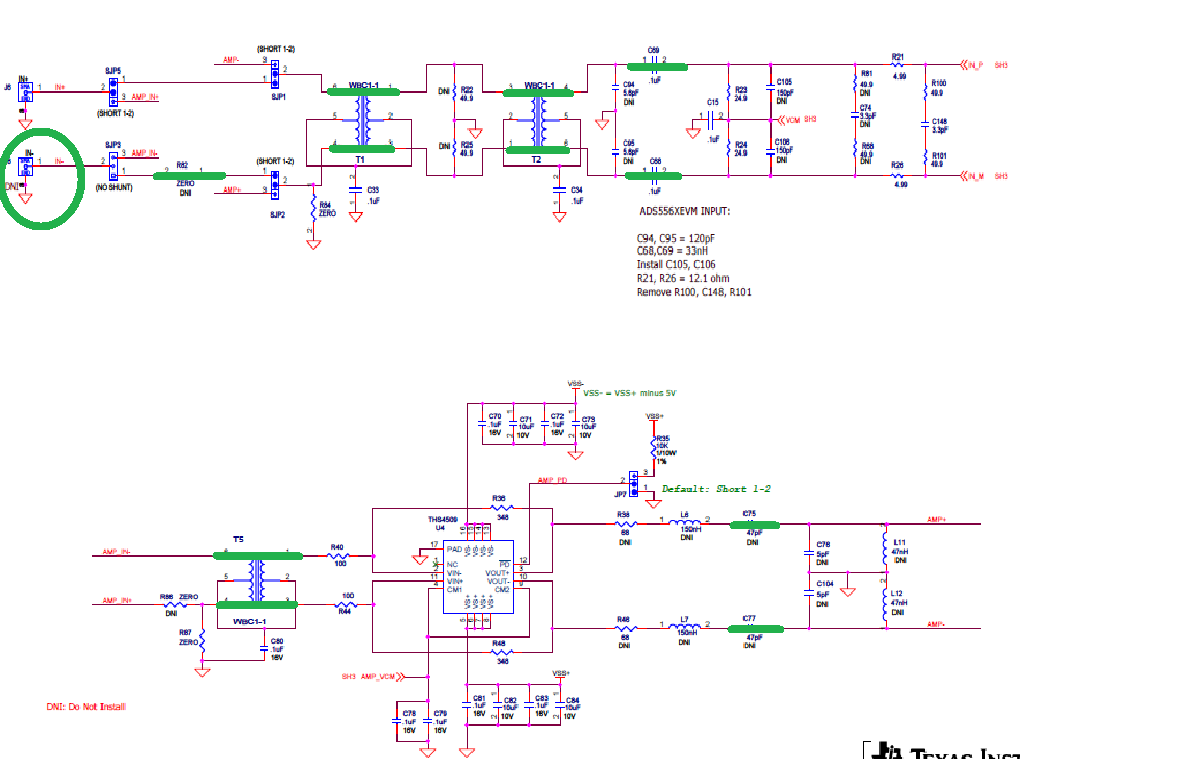Other Parts Discussed in Thread: THS4509, ADS5562
Hello all,
We need to be able to DC couple a single-ended signal in a ADS5562EVM, but it is AC coupled. Is there any modification that can be done to the board to achieve this? Strongly prefer not to make a new board and just modify this one.
Thanks,
PTD


